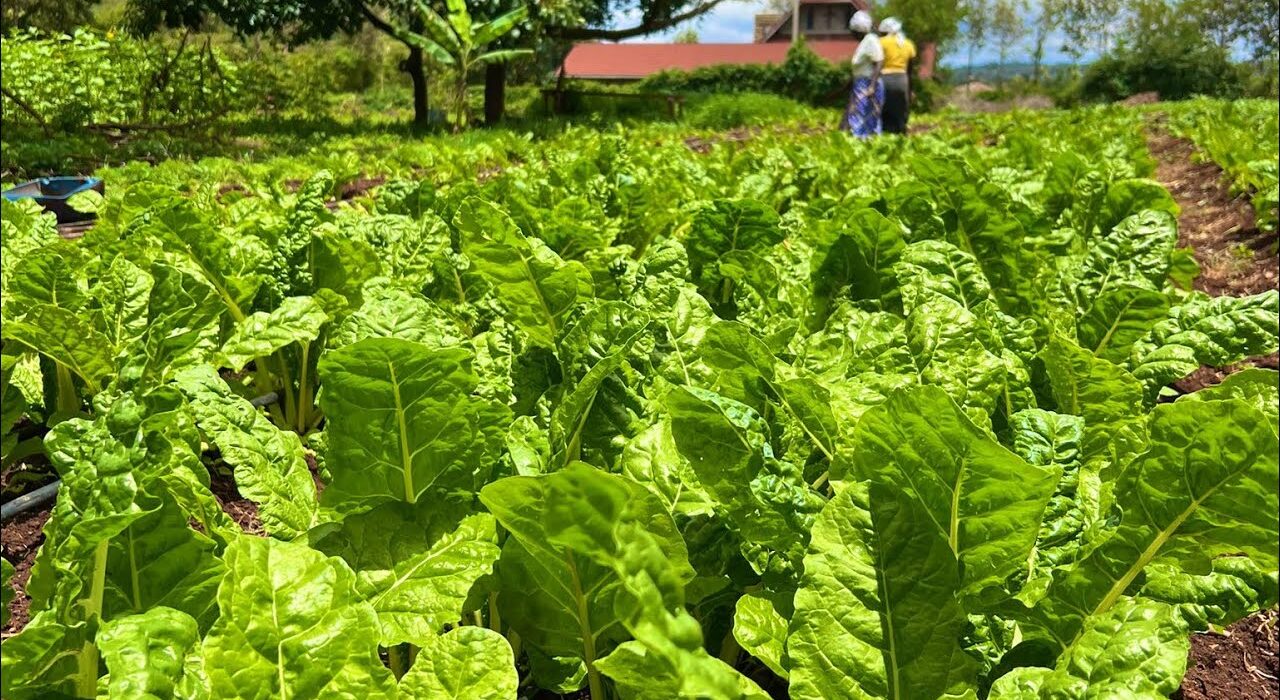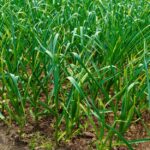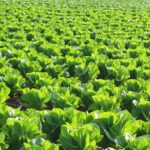Spinach farming has steadily gained popularity in Kenya, becoming a profitable venture for farmers across the country. The vegetable’s high nutritional value, rapid growth cycle, and versatility in various dishes make it an attractive crop for both local and international markets. As more Kenyans become health-conscious and seek out fresh, nutritious vegetables, spinach stands out as a crop with both domestic and export potential.
This article provides an in-depth overview of spinach farming in Kenya, focusing on the best conditions for growing spinach, how to propagate and manage the crop, and how to tap into the burgeoning market for spinach in Kenya.
Why Spinach Farming is Profitable in Kenya
Spinach offers several advantages for Kenyan farmers. Aside from being a popular vegetable in local markets, spinach has a fast-growing cycle, typically maturing in just 5 to 7 weeks. This means farmers can harvest multiple times in a season, which maximizes yields and returns. Furthermore, spinach is relatively low-maintenance and adaptable, thriving in various climatic conditions, making it an excellent choice for both large-scale and small-scale farmers.
Spinach also boasts high nutritional content, including vitamins A and C, iron, folate, and fiber, making it a favorite among health-conscious consumers. These factors contribute to its consistent demand across supermarkets, groceries, restaurants, and even institutions such as hospitals and schools.
Optimal Ecological Conditions for Spinach Farming in Kenya
To achieve the best results when farming spinach, certain environmental conditions are required. Understanding these will help ensure that your crop flourishes.
1. Temperature:
- Spinach grows best in temperatures ranging from 4°C to 16°C, making it well-suited for regions with moderate to cool climates, such as parts of Nakuru, Meru, Kiambu, and Nyeri.
2. Soil Conditions:
- A fertile, well-drained soil with a pH level of 6.4 to 7 is ideal for spinach. Organic matter, such as compost or manure, should be added to enhance soil fertility and ensure proper drainage.
3. Sunlight:
- Spinach requires full sunlight for at least 6 hours a day to thrive. In areas with excessive heat, partial shade is also an option, but it will slightly affect yield.
4. Water Requirements:
- Consistent moisture is vital for spinach growth. However, waterlogging should be avoided, as it can cause root rot. A drip irrigation system is an excellent choice for maintaining moisture without over-watering.
These conditions make areas in Kenya’s central highlands and parts of Western Kenya ideal for spinach farming.
How to Propagate and Plant Spinach
Spinach is typically propagated by seed. The seeds are first sown in a nursery bed and later transplanted into the field when the seedlings are strong enough.
Steps for Propagation
- Prepare the Nursery Bed:
- Create furrows in the soil where seeds can be sown. Make sure the nursery is placed in a location that receives adequate sunlight.
- Seed Sowing:
- Sow the seeds along the furrows and cover them lightly with a thin layer of soil.
- Moisture Management:
- Water the nursery bed to keep the soil consistently moist, but not waterlogged.
- Fungicide Treatment:
- To encourage healthy growth and prevent fungal infections, treat the nursery with a fungicide mixture such as pyramid 700 WP.
Transplanting Spinach
After about 4 to 5 weeks, when the seedlings are well-developed, they are ready to be transplanted into the main field.
- Water the Seedlings:
- About an hour before transplanting, water the seedlings to reduce transplant shock and prevent root damage.
- Spacing:
- Proper spacing between plants is crucial. A typical spacing of 15-20 cm between plants and 30-40 cm between rows allows for adequate air circulation and reduces the risk of disease.
- Watering After Transplanting:
- Ensure the transplanted seedlings are well-watered to help them establish in their new environment.
Field Management and Care for Spinach Crops
Proper field management practices are essential for ensuring healthy spinach growth and high yields.
1. Mulching:
- Apply mulch around the spinach plants to retain moisture, prevent weed growth, and regulate soil temperature. Organic mulches like straw, grass, or compost are excellent choices.
2. Thinning:
- Once the seedlings grow to about 2 inches, thin them out to ensure that there is adequate space for each plant. Thinning allows for better airflow and reduces the risk of fungal diseases.
3. Crop Rotation:
- To prevent soil depletion and reduce the build-up of pests and diseases, it’s advisable to rotate spinach with other crops such as legumes, lettuce, or tomatoes.
4. Fertilization:
- During land preparation, apply basal fertilizers like DAP, NPK, or CAN. These provide essential nutrients such as phosphorus, nitrogen, and potassium.
- After transplanting, consider foliar feeding with products like Lavender 20ml/20L or Goldchance Super Growth 50g/20L to promote root growth and healthy foliage.
Common Pests and Diseases in Spinach Farming
Spinach is prone to several pests and diseases that can affect growth and yield. Regular monitoring and intervention can minimize damage.
Common Pests:
- Aphids:
- These small insects suck sap from the plants, weakening them. Control them with organic sprays or chemical insecticides.
- Leaf Miners:
- These pests tunnel through spinach leaves, creating unsightly marks. Remove affected leaves to reduce their spread.
- Cutworms:
- These larvae damage plant stems. Hand-picking and using appropriate pesticides can help control them.
Common Diseases:
- Downy Mildew:
- This fungal disease causes yellow spots on leaves. It can be managed through crop rotation and the use of resistant varieties.
- Fusarium Wilt:
- This soil-borne fungus causes wilting and yellowing of spinach leaves. Practice crop rotation and use disease-resistant varieties.
- Anthracnose:
- This fungal disease leads to dark, sunken spots on leaves. Regularly inspect crops and remove infected plants to prevent the spread.
Harvesting Spinach for Maximum Profit
Spinach can be harvested about 5 to 7 weeks after transplanting. The timing depends on the desired size of the leaves and the specific variety being grown.
Harvesting Techniques:
- Plucking Outer Leaves:
- One common method is to pluck the outer leaves, leaving the inner ones to continue growing. This allows for multiple harvests from the same plant.
- Full Harvest:
- If market demand requires, the entire plant can be harvested at once. The plants are usually uprooted for wholesale or institutional sales.
Yield Expectations:
- On average, one acre of land can yield between 10 to 30 tons of spinach, depending on factors like soil fertility, climate, and management practices.
Exploring the Market for Spinach in Kenya
Spinach has a strong and consistent market demand in Kenya. Both local and international markets present significant opportunities for farmers who can meet quality standards.
Domestic Market Opportunities:
- Supermarkets:
- There is a growing demand for pre-washed and packaged spinach in urban supermarkets. These products are highly attractive to consumers looking for convenience.
- Restaurants and Hotels:
- Spinach is commonly used in local cuisines, making it a staple for restaurants and hotels.
- Institutions:
- Schools, hospitals, and government institutions often purchase spinach in bulk, creating steady demand for suppliers.
Export Market:
- Spinach is also exported to neighboring countries like Uganda and Tanzania, where demand for fresh vegetables is growing. With the right certifications and packaging, Kenyan spinach farmers can tap into the export market for added revenue.
Value Addition and Diversification in Spinach Farming
Farmers can increase their profit margins by adding value to their spinach products. Consider these opportunities for value addition:
- Frozen Spinach:
- Freezing spinach allows farmers to sell it off-season and tap into the export market.
- Spinach Powder:
- Spinach can be dried and ground into powder for use in smoothies, juices, and health supplements.
- Packaged Fresh Spinach:
- Pre-washed and packaged spinach is a high-demand product in urban supermarkets and grocery stores.
Challenges in Spinach Farming
Despite its profitability, spinach farming does come with challenges, including:
- Climatic Conditions:
- Droughts or heavy rains can negatively affect spinach production, making irrigation and proper timing critical.
- Pests and Diseases:
- Pests and diseases, especially fungal ones, require careful management and vigilance.
- Market Competition:
- Due to its popularity, the spinach market can be competitive, requiring farmers to differentiate their products through quality or value addition.
Spinach farming in Kenya offers tremendous opportunities for both large-scale and small-scale farmers. With the right knowledge, good agricultural practices, and proper market strategies, you can tap into the growing demand for spinach in both the local and export markets. By diversifying your farming techniques and exploring value addition, spinach farming can be a lucrative and sustainable agricultural venture.





